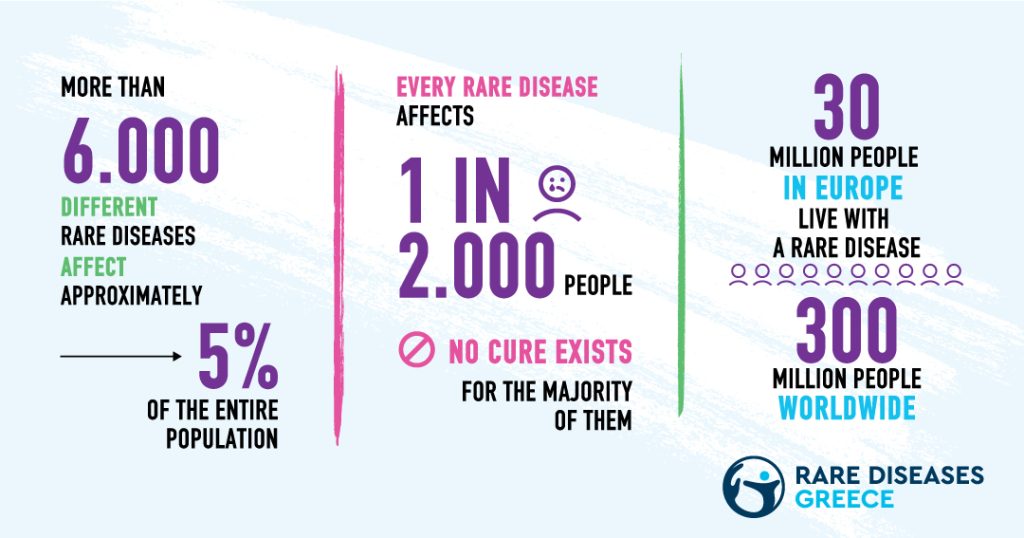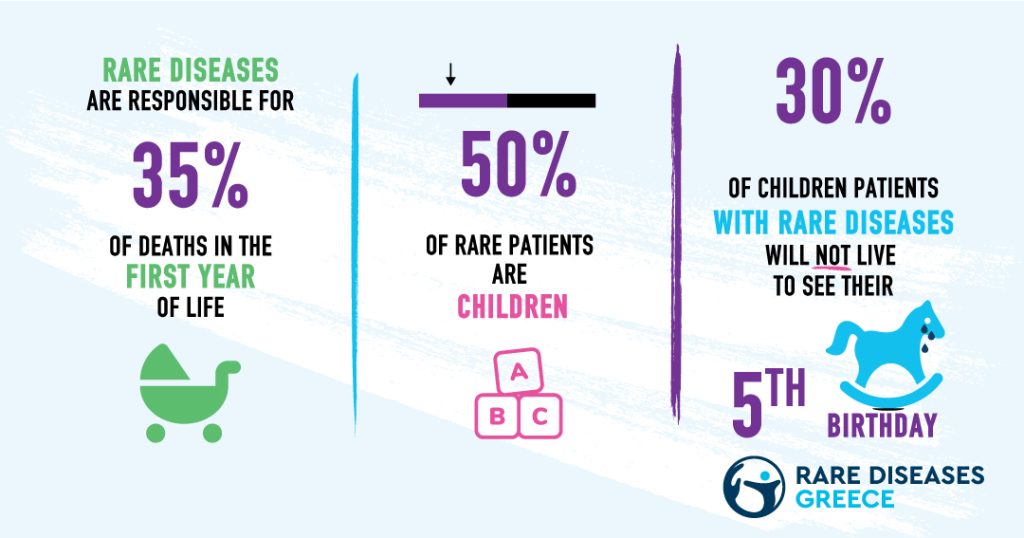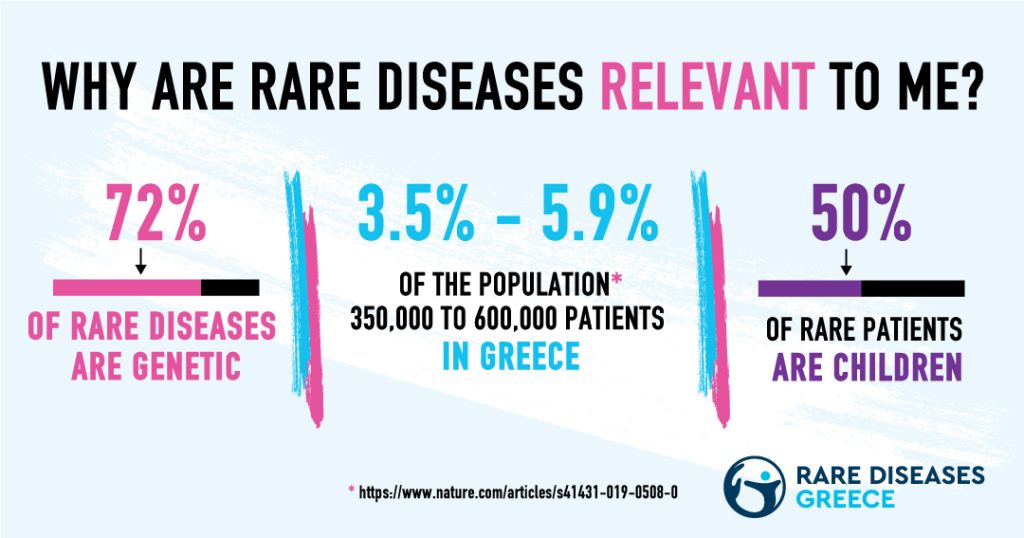
Why Rare Diseases concern us

Did you know that, currently, there are over 6,000 different rare diseases and that, every week, almost five new ones are recognized worldwide?
But when is a condition considered rare?
In Europe, a disease is considered rare when it occurs in less than 1 in 2,000 people, although most are so rare that they may affect as few as 1 in 100,000 people or less.
These are complex, chronic, and degenerative diseases that significantly affect the quality of life of patients and their families. However, if diagnosed in time and treated appropriately, some of them allow the patient to live a relatively normal life.
Did you know that rare diseases currently affect 3.5% to 5.9% of the world’s population at some point in their lives? In other words, approximately 300 million people worldwide live with a rare disease.
Currently, it is estimated that approximately 350,000 to 600,000 of our fellow human beings are affected in Greece, and over 30 million people in Europe.
It is also worth noting that 50% of rare diseases affect children, with 30% of these children dying by the age of five, and almost 50% of patients with rare diseases are undiagnosed or remain for years with incorrect diagnoses, living a long-term “Diagnostic Odyssey,” which can last anywhere from five to 30 years, if not their entire lives.


Did you know that 72% of rare diseases are genetic and that, of these, 70% appear during childhood? The rest are the result of infections, allergies, or environmental causes.
Rare diseases result in not only high mortality, increased morbidity, and low quality of life for the patient but also an increased psychological, financial, and social burden for the patient’s family, which is why it is vital to treat them holistically, ensuring prevention and their early diagnosis, equal access of patients to care and treatments, the strengthening of research, as well as the promotion of information and awareness of the world around them.